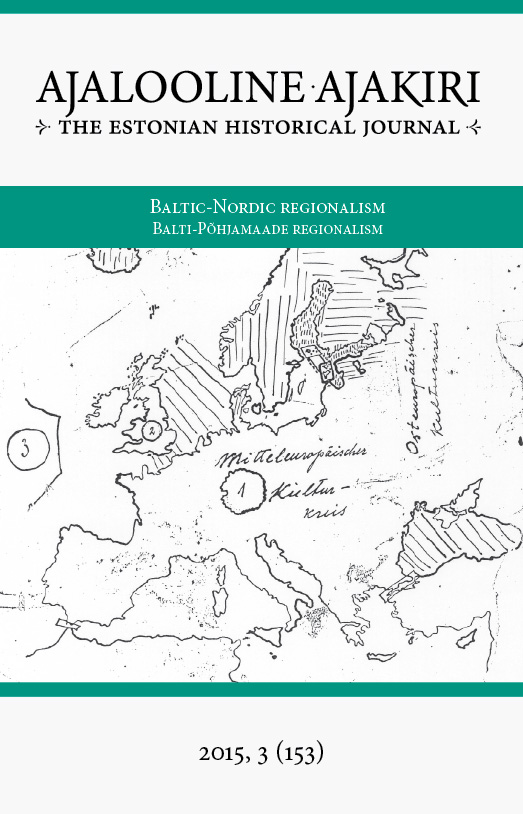Hegemony and liberation in World War I: the plans for new Mare Nostrum Balticum [Kokkuvõte: Hegemoonia ja vabanemine Esimeses maailmasõjas: plaanid uue Mare Nostrum Balticum’i loomiseks]
DOI:
https://doi.org/10.12697/AA.2015.3.03Abstract
This article studies the attempts made during World War I to imagine and build post-war Baltic Sea region with German-friendly Sweden as its leading power. Ideas to that effect were formulated and propagated in a transnational cooperation (what I call “the activist movement”) taking place in wartime Stockholm and Berlin. The activist circles included German, Swedish, Finnish and Estonian nationalist region-builders who were drawing on Sweden’s seventeenth century legacy as a historical great power, as well as the geopolitical fears and hopes associated with its geographical position. In the article, I will outline the main features of activist thinking that make it, at least in my opinion, a transnational movement, and give an overview of the three different branches of the movement and their political aims. I will also bring a few more concrete case studies as examples of how such plans played out. Keywords: activism, regionalism, Baltic Sea region, First World WarDownloads
Download data is not yet available.
Downloads
Published
2015-10-12
Issue
Section
Artiklid / Articles

